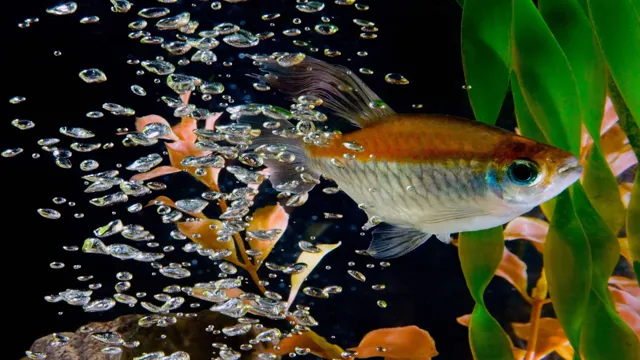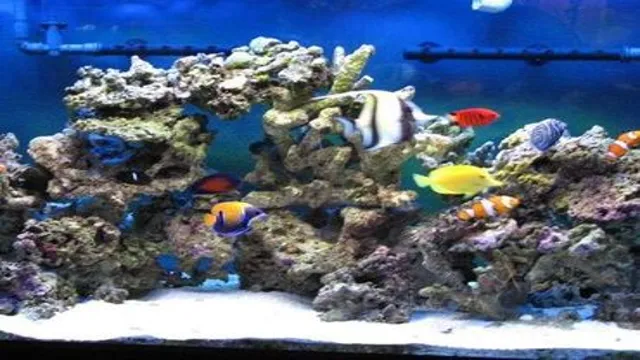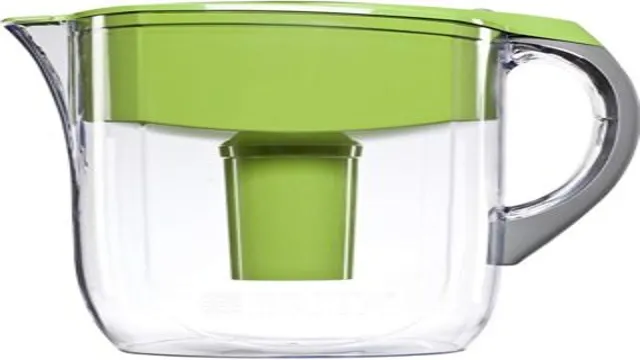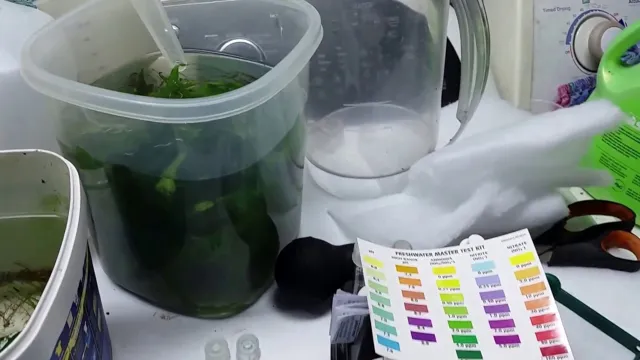As a responsible aquarium owner, the well-being of your marine pets is your top priority. One of the essential factors that contribute to their health is the water quality in the tank. Keeping the right balance of pH, ammonia, and nitrate levels is crucial.
One element that often gets overlooked is salt levels. Having the correct salinity level in a marine aquarium is crucial for the survival of your fish and other aquatic creatures. Too much or too little salt can have adverse effects on their health.
In this blog post, we’ll discuss why you need to lower salt levels in your aquarium and how to do it effectively without harming your marine life. So, let’s dive in!
Understanding Salinity
Salinity is a critical aspect of aquarium maintenance that impacts the overall health and well-being of your aquatic inhabitants. High levels of salinity can lead to stress, disease, and even death in fish and other aquatic organisms, while low levels can cause imbalances in pH and other crucial water parameters. If you notice that your aquarium’s salinity levels are too high, it’s essential to take action to lower them.
One effective method is to perform partial water changes, replacing some of the existing aquarium water with fresh, dechlorinated water. You can also add specialized aquarium salt mix to help balance out the salinity levels. It’s important to monitor salinity levels regularly and adjust accordingly to ensure a healthy and thriving aquarium ecosystem.
With the right tools and knowledge, you can maintain optimal salinity levels and provide your aquatic pets with a healthy and vibrant living environment.
What is Salinity?
Salinity is the measure of saltiness in water. It is the total amount of dissolved salts in water, usually expressed in parts per thousand (ppt) or as a concentration of salt in water. Salinity is an essential factor in determining the suitability of water for human consumption, plant growth, and aquatic life.
Different aquatic species have varying levels of tolerance towards salinity. For example, some species of fish, such as salmon and trout, can thrive in freshwater environments, while others, such as tuna and halibut, require saltwater environments. Salinity levels can also vary depending on the location and climate.
Areas near the ocean typically have higher salinity levels than inland regions. Understanding salinity is crucial as it affects many aspects of our daily lives, such as agriculture, fisheries, and the environment.

Why is Salinity Important for Aquarium Health?
Salinity plays a crucial role in maintaining a healthy environment in aquariums. Simply put, salinity refers to the amount of salt present in the water. It is vital to monitor and maintain the salinity levels as it affects the well-being of the animals living in the aquarium.
Different species of fishes and other aquatic beings require different levels of salinity to survive. For instance, marine fishes need a higher salinity level than freshwater fishes. It is important to ensure that the salinity level remains stable, as sudden changes can cause stress and discomfort to the inhabitants of the aquarium.
Salinity is also linked to the pH levels and water hardness, which further affects the aquatic life. Therefore, monitoring and controlling the salinity level is essential for a thriving aquarium.
Measuring Salinity Levels
Salinity levels in water play a crucial role in aquatic ecosystems, affecting the growth and distribution of various aquatic organisms. Salinity is a measure of the salt concentration in water, and it can be affected by various factors like evaporation, rain, and runoff from land. Understanding salinity levels is vital in maintaining healthy aquatic environments, particularly in estuaries and coastal areas where freshwater and saltwater mix.
Measuring salinity can be done using different methods, such as conductivity-based meters, refractometers, and titration kits. Each method has its advantages and limitations, but regardless of the method used, regular monitoring of salinity levels can help detect changes in water quality, enabling timely intervention and management strategies. By knowing and managing salinity levels, we can ensure the continued health of aquatic ecosystems and the organisms that rely on them.
Causes of High Salt Levels
If you’re noticing high salt levels in your aquarium, there are a few potential causes to consider. One of the most common is overfeeding your fish, as uneaten food can lead to an increase in salt concentration. Additionally, using saltwater instead of freshwater during water changes can naturally increase the salt level in your tank. (See Also: How to Make a Nano Planted Aquarium: Step-by-Step Guide to Create a Lush Green Miniature Ecosystem)
If you have any living vegetation or coral in your aquarium, these organisms may also contribute to higher salt levels as they absorb some of the salt in the water. Another factor to consider is evaporative water loss, which can leave behind concentrated salt in the water. To lower the salt level in your aquarium, you may need to conduct partial water changes with fresh water and adjust your feeding schedule to prevent overfeeding.
Overfeeding
Overfeeding your fish is a common mistake that can lead to several health issues, including high salt levels. Salt is essential for fish, but too much can be harmful. Overfeeding can cause excess waste, which raises the levels of ammonia and nitrite in the tank.
These chemicals can react with any salt that is present, causing the water’s salinity to rise. High salt levels can cause stress and damage to the fish’s gills, making it harder for them to breathe. It can also lead to other health problems like bloating, lethargy, and even death.
To prevent high salt levels, it’s essential to maintain a balanced diet and feed your fish only what they need. Monitoring the tank’s water quality and doing regular partial water changes can also help keep salt levels in check. Remember that moderation is key when it comes to feeding your fish.
Evaporation and Water Changes
One of the primary causes of high salt levels in bodies of water is evaporation. As water evaporates, it leaves behind the dissolved salts, which increases the concentration of salt in the remaining water. This is especially common in hot and arid climates, where there is less rainfall and high temperatures.
Additionally, changes in water flow patterns can also contribute to high salt levels. When water is stagnant or has little flow, it can lead to buildup and concentration of salt over time. These high salt levels can have negative impacts on aquatic ecosystems, leading to decreased biodiversity and difficulties for aquatic organisms to survive.
Understanding the causes of high salt levels in water bodies is crucial for effective management and conservation efforts.
Using Saltwater Mix in Freshwater Aquariums
Using saltwater mix in freshwater aquariums can lead to high salt levels, which can be harmful to freshwater fish and plants. The most common cause of high salt levels is the use of marine salt mix instead of freshwater aquarium salt mix. It’s important to remember that even a small amount of salt can have a significant impact on freshwater fish and plants, so it’s vital to monitor salt levels regularly.
Another cause of high salt levels is the use of evaporated tap water which contains dissolved salts. Using a water conditioner that removes chlorine and chloramines from tap water is essential to prevent this issue. Additionally, overfeeding and excess fish waste can lead to high salt levels in the aquarium.
Proper maintenance and regular water changes can help control salt levels and ensure the health of your aquarium inhabitants. Always be sure to use the appropriate salt mix for your aquarium and test salt levels regularly to prevent any potential harm.
Effect of High Salt Levels on Fish Health
If you’re noticing that the salt levels in your aquarium are too high, it’s important to take action quickly. High salt levels can have a detrimental effect on the health of your fish, causing them to become stressed and potentially even leading to death. So how can you lower the salt level in your aquarium? Firstly, you can remove some of the water from the tank and replace it with fresh water.
This will dilute the salt levels and bring them down. Another option is to use a reverse osmosis filter, which can remove excess salt from your tap water before it even enters the aquarium. It’s important to monitor the salt levels regularly to ensure they don’t become too high again.
By taking the necessary steps to lower the salt levels in your aquarium, you’ll be ensuring your fish remain happy and healthy.
Symptoms of High Salt Levels
Effects of high salt levels on fish health As we all know, salt is an essential mineral that plays a crucial role in the survival of fish. However, excessive salt levels can cause various problems for fish health. One of the most common symptoms of high salt levels is the loss of appetite in fish. (See Also: How to Clean Algae off Fake Aquarium Plants in 5 Easy Steps – Tips and Tricks)
This can lead to malnutrition and other related health issues. Another symptom is a change in behavior. When the salt levels are too high, fish tend to become quite lethargic, suffer from stress, and even become more susceptible to disease.
Moreover, high salt concentrations can also negatively impact the fish’s osmoregulatory system, leading to dehydration, shrinkage of cells and even death. Therefore, it is essential to maintain the optimal salt concentration in the fish tank to ensure the health and well-being of your aquatic pets.
Long-Term Effects on Fish Health
As we know that saltwater fish are adapted to surviving in high salt levels, but does this mean they are immune to the high salt conditions in their tanks? Not at all! In fact, high salt levels can have detrimental long-term consequences on the health of fish. For instance, the excessive presence of sodium chloride can damage the fish’s gills, skin, and eyes. Moreover, it can cause an imbalance in the fish’s internal fluids, leading to dehydration and other physiological problems, such as reduced growth rate and decreased immunity, making the fish more susceptible to infections.
Additionally, high salt levels can cause the accumulation of waste products and organic matter in the aquarium, leading to the growth of harmful bacteria and other parasites. In conclusion, maintaining an appropriate saltwater environment should be a top priority for fish owners to ensure the long-term health and wellbeing of their fish. Avoid high salt levels by regularly monitoring and maintaining the saltwater levels in the aquarium.
A healthy and sustainable aquarium means your fish can grow, thrive, and live longer in a clean and safe environment.
Lowering Salt Levels in Your Aquarium
If you have a saltwater aquarium, it’s important to regularly check the salt levels. High salt levels can harm your fish and other creatures, so it’s important to lower them if needed. One way to do this is by performing partial water changes.
Simply remove and replace a portion of the water in your aquarium with freshwater. This will dilute the salt levels and bring them down. Another option is to use reverse osmosis (RO) water, which has little to no salt content.
You can also add a filter specifically designed to remove excess salt from your water. It’s important to monitor your water parameters regularly and make adjustments as needed to keep your aquarium healthy and thriving. Overall, keeping a careful eye on the salt levels in your aquarium can go a long way in preventing health issues and ensuring a happy home for your aquatic friends.
Water Changes
If you’re looking to lower the salt levels in your aquarium, a water change is your best bet. Salt buildup can occur over time, especially in saltwater tanks or if you’ve been using a lot of aquarium salt to medicate your fish. To perform a water change, simply drain a portion of the aquarium water and replace it with fresh, dechlorinated water.
Make sure the water you add matches the temperature and pH of your original tank water. You can also add in reverse osmosis (RO) water to help further lower salt levels. Remember, don’t replace all the water at once – this can cause stress to your fish.
A gradual decrease in salinity is safer for their health. Regular water changes can also help prevent salt buildup in the future and improve the overall water quality in your aquarium.
Reverse Osmosis Water
If you’re an aquarium owner, you know how important it is to maintain the right balance of chemicals and minerals in the water. One common problem that many aquarium enthusiasts face is high levels of salt in the water, which can be harmful to fish and other aquatic life. This is where reverse osmosis water comes in handy.
Using this type of filtration system can help you lower salt levels in your aquarium, giving your fish a healthier environment to thrive in. Reverse osmosis works by forcing water through a semi-permeable membrane that removes most of the impurities, including salt. The result is clean, fresh water that is perfect for your fish to live in.
So, if you want to keep your aquarium healthy and thriving, consider using reverse osmosis water for your filtration needs. It’s a simple and effective way to ensure your aquatic pets are living in the best possible conditions. (See Also: How to Get Hard Water Out of Aquarium Using Effective Techniques)
Adding Freshwater Plants
If you’re looking to lower salt levels in your aquarium, adding freshwater plants can be a great solution. Not only do plants absorb salts from the water, but they also release oxygen and nutrients that can benefit your aquatic pets. Some popular freshwater plants that can help with salt reduction include hornwort, anacharis, and water sprite.
These plants can be easily added to your aquarium and can help create a healthy and balanced ecosystem for your fish and other inhabitants. So next time you’re struggling with high salt levels in your aquarium, consider adding some freshwater plants to the mix – your aquatic pets will thank you for it!
Conclusion
In conclusion, keeping your aquarium’s salt levels at a healthy balance is crucial for the well-being of your aquatic friends. By regularly testing the water, performing partial water changes, and using high-quality salt mixes, you can ensure a safe and comfortable environment for your fishy companions. Remember, a dash of salt can enhance flavor in the kitchen, but too much can be detrimental to your aquarium.
So, let’s keep the salt shaker away from the aquarium and instead, let our fish live in the perfect environment – a true oceanic oasis!”
FAQs
Why is it important to lower the salt level in an aquarium?
High salt levels can be harmful to certain fish and plants, and can also create an unbalanced ecosystem in the aquarium.
How can I test the salt level in my aquarium?
You can use a hydrometer or a refractometer to measure the salt level in your aquarium.
How often should I test my aquarium’s salt level?
It is recommended to test the salt level at least once a week to ensure a stable environment for your aquatic pets.
What are some ways to lower the salt level in an aquarium?
Adding freshwater, replacing some of the water with freshwater, or using a specialized salt-removing product can all help to lower the salt level in an aquarium.
Can lowering the salt level harm my fish?
While reducing the salt level too quickly or drastically can be harmful to some fish species, a gradual reduction should not cause harm. It is important to monitor the fish’s behavior and health during the process.
How do I prevent high salt levels in the first place?
Regular water changes and proper maintenance of equipment can help prevent salt levels from building up in the aquarium.
Are there any educational resources available to learn more about aquarium care?
Online forums, aquarium societies, and books on aquarium care can all provide valuable resources and information for educating oneself about proper aquarium care, including how to maintain the appropriate salt level.






